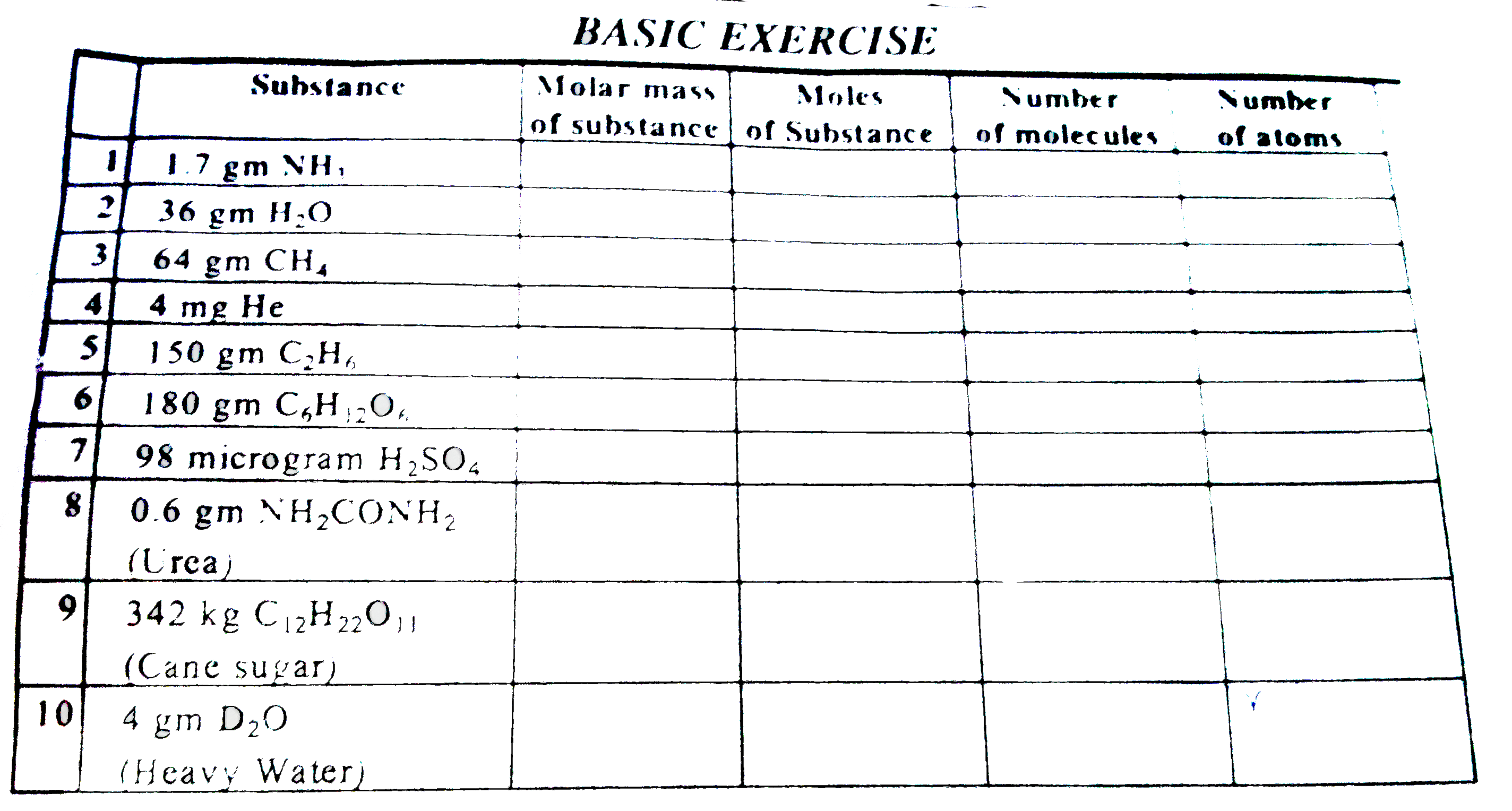Three containes of the same volume contain three different gases. The masses of the molecules are and and the number of molecules in their respective containers are and . The gas pressure in the containers are and respectively. All the gases are now mixed and put in one of the containers. The pressure of mixture will be
The correct Answer is:c
To find the pressure P of the mixture when three different gases are mixed in one container, we can use Dalton's Law of Partial Pressures. Here’s a step-by-step solution:
Step 1: Understand Dalton's Law of Partial Pressures
Dalton's Law states that the total pressure exerted by a mixture of non-reacting gases is equal to the sum of the partial pressures of each gas.
Step 2: Write the Expression for Total Pressure
For the three gases in the containers, we can express the total pressure P as:
P=P1+P2+P3
where P1, P2, and P3 are the pressures of the individual gases in their respective containers.
Step 3: Identify the Variables
- m1,m2,m3: Masses of the molecules of the gases
- N1,N2,N3: Number of molecules in their respective containers
- P1,P2,P3: Pressures of the gases in their respective containers
Step 4: Conclusion
The total pressure P when the gases are mixed in one container is simply the sum of the individual pressures:
P=P1+P2+P3
Dalton's Law states that the total pressure exerted by a mixture of non-reacting gases is equal to the sum of the partial pressures of each gas.
For the three gases in the containers, we can express the total pressure P as:
P=P1+P2+P3
where P1, P2, and P3 are the pressures of the individual gases in their respective containers.
- m1,m2,m3: Masses of the molecules of the gases
- N1,N2,N3: Number of molecules in their respective containers
- P1,P2,P3: Pressures of the gases in their respective containers
The total pressure P when the gases are mixed in one container is simply the sum of the individual pressures:
P=P1+P2+P3
Similar Questions
Two perfect gases at absolute temperature T1andT2 are mixed. There is no loss of energy. The masses of the molecules are m1andm2. The number of molecules in the gases are n1andn2. The temperature of the mixture is
View SolutionThree perfect gases at absolute temperature T1,T2 and T3 are mixed. The masses f molecules are m1,m2 and m3 and the number of molecules are n1,n2 and n3 respectively. Assuming no loss of energy, the final temperature of the mixture is
View Solution
Knowledge Check
- Question 1 - Select One
If N1,N2,N3….are the number of molecules with molecular masses M1,M2mM3….respectively, then mass average molecular mass is expressed
AΣNiM2iΣNiMiBΣNiMiΣNiCΣM2iΣNiDΣNiMiΣMi
Three perfect gases at absolute temperature T1,T2 and T3 are mixed. The masses f molecules are m1,m2 and m3 and the number of molecules are n1,n2 and n3 respectively. Assuming no loss of energy, the final temperature of the mixture is
View SolutionTwo perfect gases (1) and (2) are at temperatures T1 and T2 . If the number of molecules of the two gases are n1 and n2 and the masses of the molecules m1 and m2, find the resulting temperature when the two gases are mixed. Assume that there is no loss of energy on mixing the two gases.
View Solutionn mole of He and 2n mole of O2 is mixed in a container. Then (CpCv)mix will be
View SolutionEqual mass of O2 and O3 gases contain the same number of :
View SolutionIfN1,N2,N3,……are the number of molcules with molecular masses M1,M2,(M3,…respectively ,then mass average molar mass is expressed as:
View Solution
If a closed container contain 5 moles of CO2 gas, then find total number of CO2 molecules in the container (NA=6×1023)View SolutionEqual molecules of N2 and O2 are kept in closed container at pressure P. If N2 is removed from the system, then what will be the pressure of the container?
View Solution

